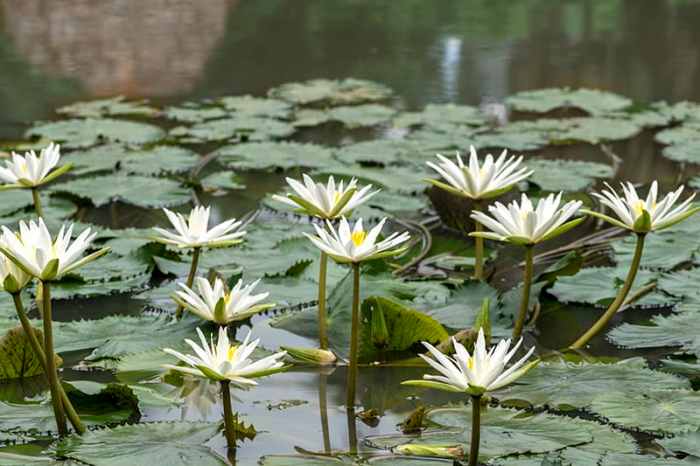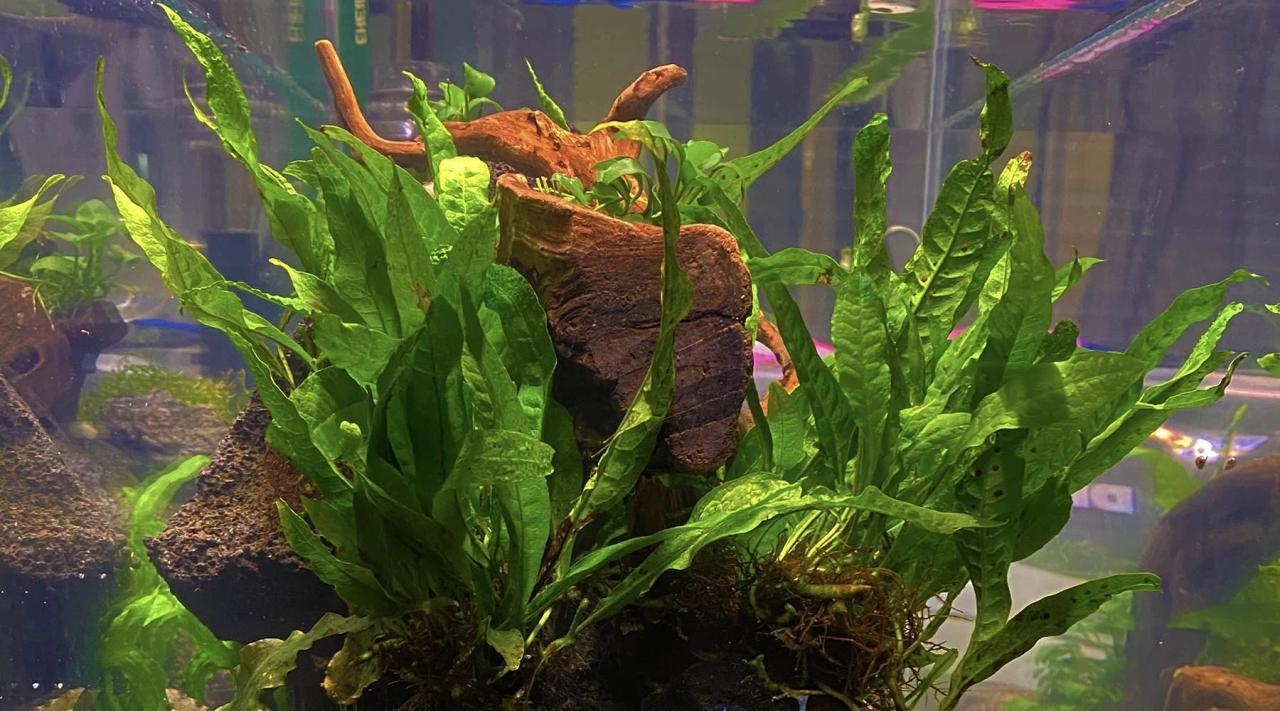What Other Plants Live in Fresh Water?
Freshwater Plant Life: What Other Plants Live In Fresh Water

Source: trees.com
What other plants live in fresh water – Freshwater ecosystems teem with a diverse array of plant life, playing crucial roles in maintaining the health and stability of these vital habitats. From the microscopic algae forming the base of the food web to the large emergent plants providing shelter for fish and other organisms, freshwater plants are essential components of these environments. This exploration delves into the fascinating world of freshwater plants, examining their types, ecological roles, distribution, human impacts, and conservation.
Types of Freshwater Plants and Adaptations
Freshwater plants exhibit remarkable adaptations to thrive in their unique aquatic environments. Categorizing them based on their relationship with water provides a clearer understanding of these adaptations.
| Plant Name | Type | Habitat Preference | Description |
|---|---|---|---|
| Elodea canadensis (Waterweed) | Submerged | Clear, shallow lakes and streams | Completely underwater, with thin, ribbon-like leaves for efficient light absorption. |
| Typha latifolia (Common Cattail) | Emergent | Shallow wetlands and marshes | Roots submerged, stems and leaves extend above water, facilitating gas exchange and reproduction. |
| Lemna minor (Duckweed) | Floating | Still, nutrient-rich waters | Tiny, free-floating plants with simple structures, maximizing surface area for sunlight capture. |
| Sagittaria latifolia (Broadleaf Arrowhead) | Marginal | Shallow edges of ponds and lakes | Grows in shallow water or moist soil at the water’s edge, tolerating fluctuating water levels. |
Submerged plants like Elodea have thin, flexible leaves to withstand water currents and maximize light absorption in the water column. Emergent plants such as Typha possess specialized tissues for oxygen transport to submerged roots. Floating plants like Lemna have reduced structural support, relying on buoyancy to remain afloat. Marginal plants like Sagittaria exhibit tolerance to varying water levels and soil conditions.
Reproductive strategies also vary significantly. Elodea reproduces primarily through vegetative fragmentation, easily spreading through broken-off pieces. Typha utilizes both sexual reproduction (seeds) and vegetative propagation (rhizomes). Lemna reproduces rapidly through asexual budding, creating numerous daughter plants.
Ecological Roles of Freshwater Plants, What other plants live in fresh water
Freshwater plants are fundamental to the health and functioning of aquatic ecosystems. Their ecological roles are multifaceted and essential for maintaining biodiversity and water quality.
They provide vital habitat and shelter for a wide range of aquatic animals. Fish, amphibians, invertebrates, and waterfowl all utilize freshwater plants for refuge from predators, nesting sites, and foraging grounds. For example, dense stands of cattails offer nesting habitat for birds, while submerged plants provide cover for small fish.
Freshwater plants play a critical role in maintaining water quality through oxygen production via photosynthesis and nutrient cycling. Oxygen released during photosynthesis is crucial for aquatic life, while their roots help absorb excess nutrients, preventing eutrophication (excessive nutrient enrichment leading to algal blooms).
Invasive freshwater plant species can severely disrupt native ecosystems.
- Hydrilla verticillata (Hydrilla): This highly invasive plant can outcompete native species for resources, reducing biodiversity and clogging waterways.
- Eichhornia crassipes (Water Hyacinth): Rapid growth forms dense mats that block sunlight, reducing oxygen levels and harming aquatic life.
- Pistia stratiotes (Water Lettuce): Similar to water hyacinth, it forms dense mats, impacting water flow and oxygen levels.
Distribution and Habitat Preferences
The distribution of freshwater plants is largely determined by several key environmental factors.
Water temperature, sunlight availability, and nutrient levels are major influences on plant growth and distribution. Temperature affects metabolic rates, while sunlight drives photosynthesis. Nutrient availability dictates plant growth and species composition.
Three distinct freshwater plant communities illustrate this:
- Fast-flowing streams: Characterized by low nutrient levels, high oxygen levels, and a dominance of species adapted to strong currents, such as certain mosses and algae.
- Eutrophic lakes: High nutrient levels support dense growth of emergent and floating plants like cattails and duckweed, often leading to algal blooms.
- Oligotrophic lakes: Low nutrient levels support less dense vegetation, with a greater diversity of submerged plants that are adapted to low nutrient conditions.
A hypothetical scenario: Increased nutrient runoff into a lake could favor the growth of nutrient-demanding species like Lemna minor (duckweed), potentially outcompeting other species and altering the community structure. Conversely, a reduction in water flow could lead to increased sedimentation, impacting light penetration and affecting submerged plant communities.
Human Impact and Conservation

Source: 2hraquarist.com
Human activities significantly impact freshwater plant populations.
Pollution (e.g., agricultural runoff, industrial discharge) introduces harmful substances, altering water quality and affecting plant growth. Dam construction alters water flow and sediment regimes, impacting plant communities. Habitat destruction through wetland drainage and shoreline development directly reduces plant habitats.
Conservation and restoration efforts are crucial for protecting freshwater plant diversity.
| Method | Description |
|---|---|
| Habitat restoration | Rehabilitating degraded wetlands and riparian zones to provide suitable habitats for freshwater plants. |
| Invasive species control | Managing and eradicating invasive plants to protect native species and restore ecosystem balance. |
Freshwater plants have economic importance, supporting fisheries through providing habitat and food for fish, and contributing to water purification by filtering pollutants.
Examples of Specific Freshwater Plants
Three specific examples highlight the diversity of freshwater plant life.
Besides water lilies and reeds, various aquatic plants thrive in freshwater environments. Understanding their growth requires exploring the fundamental role of water; to learn more about this crucial process, consider reading this article on how does water make the plant grow. This knowledge helps us appreciate how water, a vital component, supports the flourishing of diverse freshwater flora, including duckweed and various submerged species.
Vallisneria americana (Eelgrass): A submerged plant with long, ribbon-like leaves, it thrives in clear, shallow waters and provides habitat for small invertebrates and fish. Imagine its long, slender leaves swaying gently in the current, a haven for tiny creatures.
Nymphaea odorata (White Water Lily): This floating plant features large, round leaves and fragrant white flowers. It creates shade and provides habitat for aquatic insects and fish. Picture its broad, lily pads floating serenely on the water’s surface, adorned with delicate white blooms.
Utricularia vulgaris (Greater Bladderwort): A carnivorous plant with submerged, bladder-like traps to capture small invertebrates. It’s an unusual example, demonstrating the diverse adaptations found in freshwater plants. Envision its intricate underwater traps, silently waiting to ensnare unsuspecting prey.
Comparing Vallisneria (submerged) and Nymphaea (floating): Vallisneria has thin leaves for efficient light absorption in the water column, while Nymphaea has large, buoyant leaves to maximize sunlight capture at the surface. Vallisneria‘s photosynthetic processes are adapted to lower light intensities, while Nymphaea‘s are optimized for high light conditions.
Utricularia vulgaris is particularly interesting due to its carnivorous nature, a unique adaptation in the freshwater environment, allowing it to supplement nutrient uptake in nutrient-poor waters.
FAQ Summary
What are some common threats to freshwater plant populations?
Pollution (chemical runoff, sewage), habitat destruction (damming, dredging), invasive species, and climate change are major threats.
How do freshwater plants reproduce?
Reproduction methods vary widely, including seeds, vegetative propagation (runners, rhizomes), and fragmentation.
Can I grow freshwater plants in my aquarium?
Yes, many species are suitable for aquariums, but research specific plant needs before purchasing.
What role do freshwater plants play in carbon sequestration?
They absorb carbon dioxide during photosynthesis, contributing to carbon cycling and potentially mitigating climate change.




















